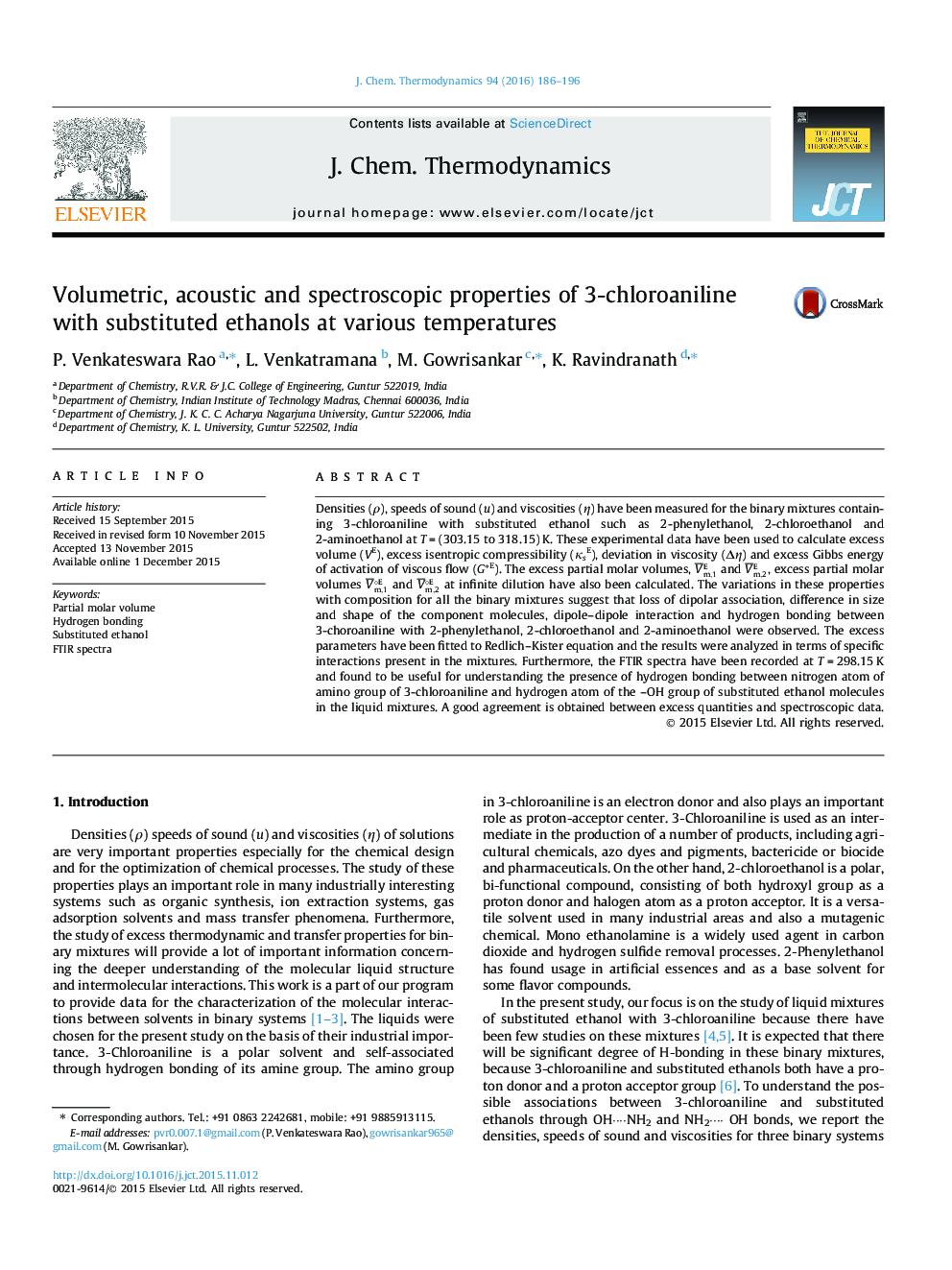| Article ID | Journal | Published Year | Pages | File Type |
|---|---|---|---|---|
| 215052 | The Journal of Chemical Thermodynamics | 2016 | 11 Pages |
•Thermophysical properties of 3-chloroaniline with substituted ethanols were studied at various temperatures.•Excess volume, deviation in viscosity and isentropic compressibility data were correlated with Redlich–Kister equation.•Intermolecular hydrogen bonding between amine and hydroxyl group were studied by FTIR spectroscopy.
Densities (ρ), speeds of sound (u) and viscosities (η) have been measured for the binary mixtures containing 3-chloroaniline with substituted ethanol such as 2-phenylethanol, 2-chloroethanol and 2-aminoethanol at T = (303.15 to 318.15) K. These experimental data have been used to calculate excess volume (VE), excess isentropic compressibility (κsE), deviation in viscosity (Δη) and excess Gibbs energy of activation of viscous flow (G∗E). The excess partial molar volumes, V‾m,1E and V‾m,2E, excess partial molar volumes V‾m,1∘E and V‾m,2∘E at infinite dilution have also been calculated. The variations in these properties with composition for all the binary mixtures suggest that loss of dipolar association, difference in size and shape of the component molecules, dipole–dipole interaction and hydrogen bonding between 3-choroaniline with 2-phenylethanol, 2-chloroethanol and 2-aminoethanol were observed. The excess parameters have been fitted to Redlich–Kister equation and the results were analyzed in terms of specific interactions present in the mixtures. Furthermore, the FTIR spectra have been recorded at T = 298.15 K and found to be useful for understanding the presence of hydrogen bonding between nitrogen atom of amino group of 3-chloroaniline and hydrogen atom of the –OH group of substituted ethanol molecules in the liquid mixtures. A good agreement is obtained between excess quantities and spectroscopic data.
Graphical abstractEffect of hydrogen bonding on excess molar volumes.Figure optionsDownload full-size imageDownload as PowerPoint slide
